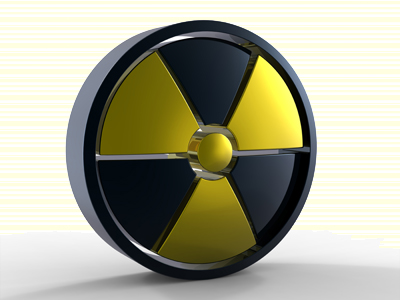U.S. Army General: The Whole Northern Hemisphere is at Risk of Becoming Largely Uninhabitable 
You may have entertained the idea of an improbable civilization ending events such as a ‘global killer’ asteroid, earth crust displacement or massive solar storms, but what if there existed a situation right now that was so serious that it literally threatened our very existence? According to a host of scientists, nuclear experts and researchers, were are facing exactly such a scenario – and current efforts may not be able to stop it. When the Fukushima nuclear plants sustained structural damage and a catastrophic failure of their spent fuel cooling systems in the aftermath of the Japanese earthquake and Tsunami in 2011, it left the government of Japan, Tokyo Power and nuclear regulatory agencies around the world powerless to contain the release of deadly radiation. A year on, the battle for control of Fukushima continues to no avail. It’s estimated that tens of thousands of people in Japan and the whole of North America have been affected, with reports indicating that children in Japan and the U.S. are already being born with birth defects, as well as thousands who have already succumbed to radiation related illness. As we initially followed the breaking news during the first thirty days of the accident, we suggested the Fukushima disaster would be worse than Chernobyl. Not even we could have imagined how much worse it would be. If current estimates are correct, Fukushima has already released as much radiation into the atmosphere and Pacific Ocean as Chernobyl, and the potential for a disaster at least ten times worse is highly probable in the event of another earthquake or accident that leads to a collapse of the cooling structures which are above ground and have already suffered significant damage. According to U.S. Army General Albert N. Stubblebine (ret.) of the Natural Solutions Foundation, the situation is extremely serious and poses a significant danger to our entire civilization. Since TEPCO and the Japanese government have refused the entombment option (as the Russians did with Chernobyl) the world is at the mercy of nature. A mistake here would cause the deaths of tens of millions of people across the globe. If there ever existed a threat that could cause the end of the world as we know it, it’s the ongoing and unresolved nuclear saga in Japan:
We can play the denial game all day long and pretend that, because the mainstream media is not reporting on it, there is no threat, but the facts are quite clear. This is, without a doubt, the most immediate threat faced by the world. It’s so serious, in fact, that the Japanese government has considered and put into place evacuation plans for the whole of Tokyo – some 40 million people. Reports are also emerging that suggest a collapse of the spent fuel pools would be so serious that the entire country of Japan may have to be evacuated. The entire country – that’s 125 million refugees that will cause an unprecedented humanitarian disaster. Before you argue that these are the ravings of just alternative media conspiracy theorists and fearmongers, consider the assessment put forth by Robert Alvarez , a senior policy adviser to the Secretary for National Security and the Environment for the US Department of Energy:
Regulatory agencies all over the world are warning of the potentiality of a further degradation of the Fukushima nuclear reactors and spent fuel pools, and the subsequent nuclear fallout that would follow. If these reactors go – and they could at any moment for any number of reasons – we’re looking at a situation for which you simply cannot stock enough food, or water, or supplies. Radiation would spread across the entire northern hemisphere and would be impossible to contain. While we’ve argued in the past that there is no place we’d rather be than in the United States of America in the event of a socio-economic collapse or global conflict, if these spent fuel pools collapse, then an international exit strategy may be the only option. Because details are sparse and research limited, it is difficult to predict what nuclear fall out from Japan may look like. The following map may be of some help, as it details the estimated fallout pattern resulting from a nuclear war between Russia and the United States. You’ll note that, while most of the world would be irradiated, the southern hemisphere would be your best bet to avoid the brunt of it:
(via Where Do I Go If Fukushima Blows?) Beachfront property in Antarctica sounds quite appealing right about now. |
 |
 |